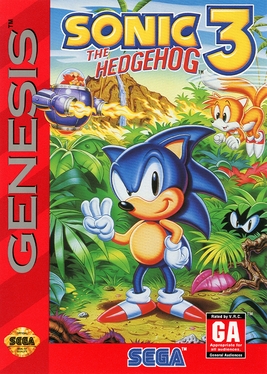
Sonic the Hedgehog 3 is a 1994 platform game developed and published by Sega for the Sega Genesis. Like previous Sonic games, players traverse side-scrolling levels while collecting rings and defeating enemies. They control Sonic and Tails, who attempt to retrieve the Chaos Emeralds to stop Doctor Robotnik from relaunching his space station, the Death Egg, after it crash-lands on a mysterious floating island. Sonic 3 introduces Knuckles the Echidna, the island guardian, who lays traps for Sonic and Tails.

Knuckles' Chaotix is a 1995 platform game developed by Sega for the 32X. A spin-off from the Sonic the Hedgehog series, it features Knuckles the Echidna and four other characters known as the Chaotix, who must prevent Doctor Robotnik and Metal Sonic from obtaining six magic rings and conquering a mysterious island. The gameplay is similar to previous Sonic games: players complete levels while collecting rings and defeating enemies. Knuckles' Chaotix introduces a partner system whereby the player is connected to another character via a tether; the tether behaves like a rubber band and must be used to maneuver the characters.

Sonic Blast is a 1996 side-scrolling platform video game known for its use of pre-rendered visuals. To stop Doctor Robotnik from using Chaos Emerald shards to fortify his base, the player controls Sonic the Hedgehog and Knuckles the Echidna through 15 levels. As a Sonic the Hedgehog series platformer, the characters run and jump to reach the end of a level while defeating enemy robots and collecting rings. In separate bonus stages, the player must run forward and collect rings to earn one of the Chaos Emerald shards.

Sonic Drift is a 1994 racing game based on Sonic the Hedgehog developed and published by Sega for the Game Gear. Players control one of four characters as they race to the finish line, with 18 tracks themed after levels in 1991's Sonic the Hedgehog.
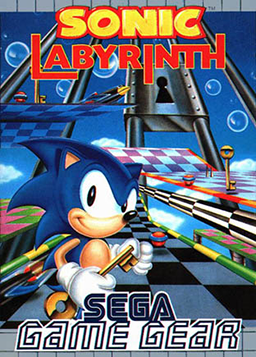
Sonic Labyrinth is an action-puzzle video game developed by Minato Giken and published by Sega for the Game Gear in 1995. The game features Sonic the Hedgehog exploring maze-like stages from an isometric perspective. Dr. Robotnik has robbed Sonic of his trademark speed, so Sonic walks slowly but can roll into a ball and dash across the stages.

Sonic R is a 1997 racing game developed by Traveller's Tales and Sonic Team and published by Sega for the Sega Saturn. It is the third racing game in the Sonic the Hedgehog series, and the first to feature 3D computer graphics. The player races one of ten Sonic characters in various Sonic-themed race tracks as they attempt to stop Doctor Robotnik from stealing the Chaos Emeralds and enslaving the world. Sonic R features single-player and multiplayer game modes, and while similar to kart racing games such as Mario Kart, it places an emphasis on jumping and exploration. By collecting items and completing objectives, players can unlock secret characters.

Sonic Shuffle is a Sonic the Hedgehog-themed party game developed and published by Sega for the Dreamcast in 2000. The game plays like a board game much in the same vein as Nintendo's Mario Party series, with up to four players moving their characters across a game board filled with a variety of spaces which can trigger different events. Some spaces will launch minigames that pit the players against each other in short competitive events.
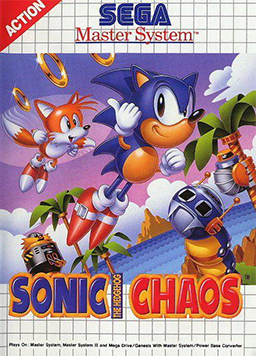
Sonic the Hedgehog Chaos is a 1993 platform game published by Sega for the Master System and Game Gear. Players control Sonic the Hedgehog and his sidekick Miles "Tails" Prower in their quest to retrieve the Chaos Emeralds from Doctor Robotnik, who has stolen them to construct nuclear weapons. Gameplay involves running through stages, collecting rings, and defeating enemies. It is largely based on the Master System version of Sonic the Hedgehog 2, and is thus considered a follow-up to that game. Chaos is the first Sonic game for the Master System and Game Gear to feature Tails as a separate playable character with his own unique abilities.

Fantastic Dizzy is a 1991 video game developed by Codemasters. It is part of the Dizzy series. It was published on several platforms, including Mega Drive/Genesis, Master System, Game Gear, Nintendo Entertainment System, Amiga, and MS-DOS.

Zahhāk or Zahāk, also known as Zahhak the Snake Shoulder, is an evil figure in Persian mythology, evident in ancient Persian folklore as Azhi Dahāka, the name by which he also appears in the texts of the Avesta. In Middle Persian he is called Dahāg or Bēvar Asp the latter meaning "he who has 10,000 horses". In Zoroastrianism, Zahhak is considered the son of Ahriman, the foe of Ahura Mazda. In the Shāhnāmeh of Ferdowsi, Zahhāk is the son of a ruler named Merdās.
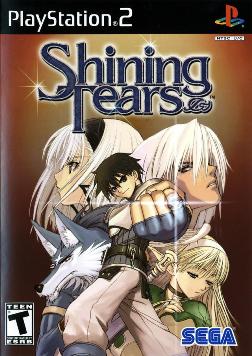
Shining Tears is an action role-playing game co-developed by Nextech and Amusement Vision and published by Sega in 2004 for the PlayStation 2 as a part of the Shining video game series. It tells the story of a mysterious boy named Xion.

Sonic and the Secret Rings is a 2007 platform game developed by Sonic Team and published by Sega for the Wii. A spin-off from the Sonic the Hedgehog series, it is the first title in the franchise for the system, and follows Sonic the Hedgehog's quest to stop an evil genie named Erazor Djinn. In addition to the basic platforming gameplay of previous Sonic titles, Secret Rings uses a system of experience points and levels, as well as special moves that are unlocked by means of progression.
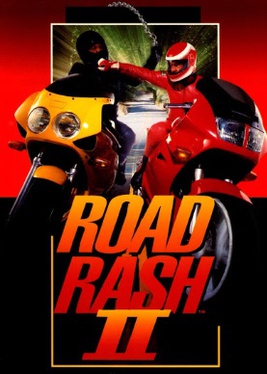
Road Rash II is a 1992 racing and vehicular combat game developed and published by Electronic Arts (EA) for the Sega Genesis. The game is centered around a series of motorcycle races throughout the United States that the player must win to advance to higher-difficulty races, while engaging in unarmed and armed combat to hinder the other racers. It is the second installment in the Road Rash series and introduces a split-screen two-player mode for competing human players, nitrous oxide charges on certain bikes, and chains as offensive weapons.
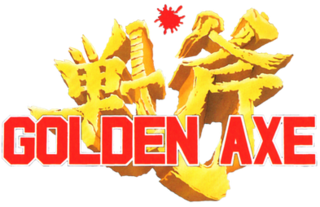
Golden Axe is a series of side-scrolling beat 'em up arcade video games developed by Sega. The series takes place in a medieval fantasy world where several heroes have the task of recovering the legendary Golden Axe, the mainstay element of the series.

Shining Force: The Sword of Hajya is a 1993 tactical role-playing game for the Sega Game Gear.

X-Men is a video game that was released in 1994 for the Sega Game Gear featuring the X-Men superhero team. In the game, most of the X-Men have been captured by Magneto; only Wolverine and Cyclops escaped the initial assault on X-Men headquarters and are available for play at the start of the game. Players rescue the other X-Men and use them and their abilities to defeat Magneto.

Galaga '91 is a 1991 fixed shooter video game developed and published by Namco for the Game Gear. It was published by Sega in Europe and renamed Galaga 2. The first portable installment in the Galaxian series, players control a lone starfighter in its mission to eradicate the hostile Galaga forces before they take over Earth. Gameplay revolves around shooting down formations of enemies and avoiding their projectiles.
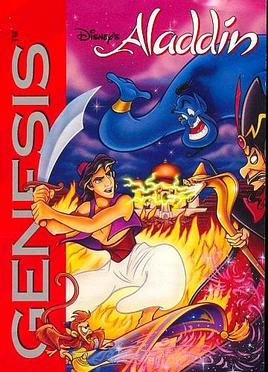
Aladdin is a 1993 platform game based on the 1992 film of the same name developed by Virgin Games. The game was released by Sega for the Sega Genesis on October 19, 1993, as one of several games based on the film, including another game that was released in the same month by Capcom for the Super NES.

Aladdin is a 1994 platform game developed by SIMS Co., Ltd. for the Game Gear and Master System. Based on the 1992 animated film of the same name, Aladdin is a side-scrolling platform game in which the player character is Aladdin.

Road Rash is a 1991 racing and vehicular combat video game originally developed and published by Electronic Arts (EA) for the Sega Genesis. It was subsequently ported to a variety of contemporary systems by differing companies. The game is centered around a series of motorcycle races throughout California that the player must win to advance to higher-difficulty races, while engaging in unarmed and armed combat to hinder the other racers.





















